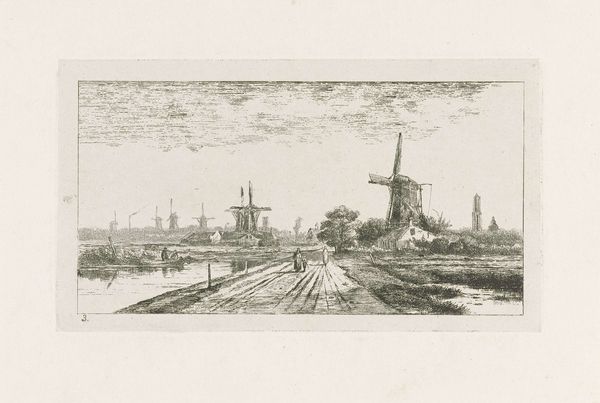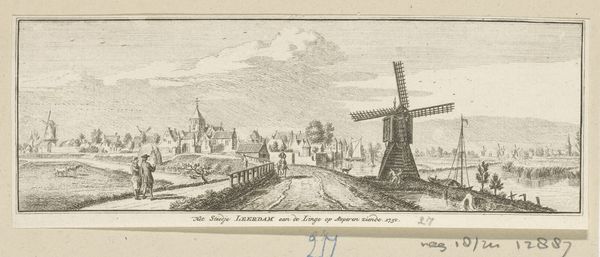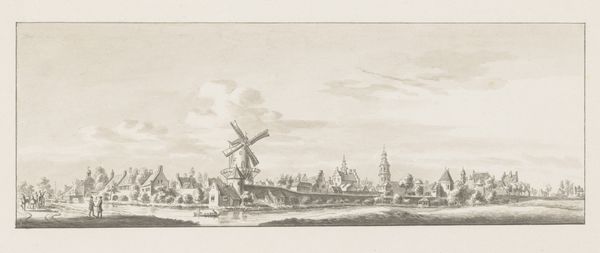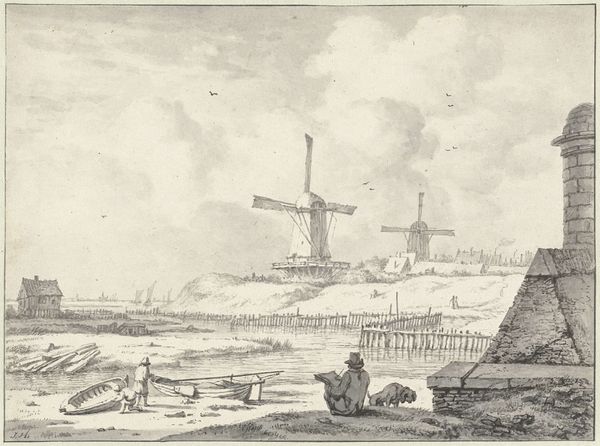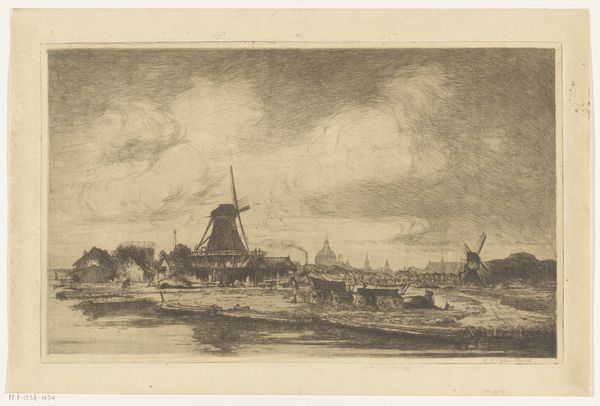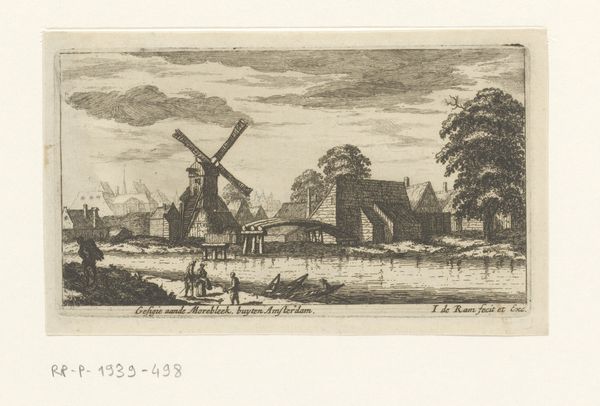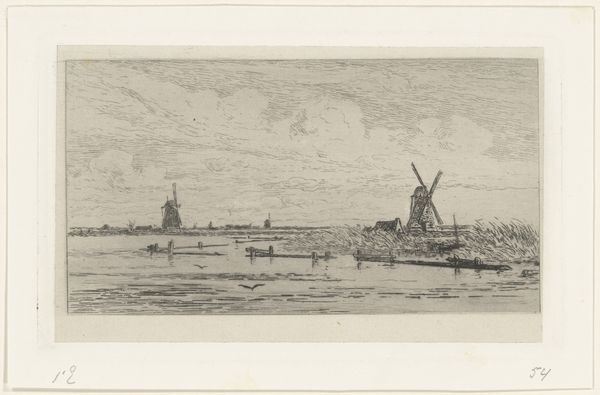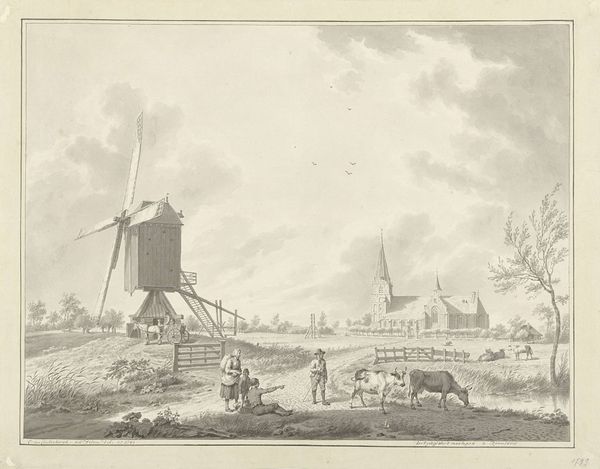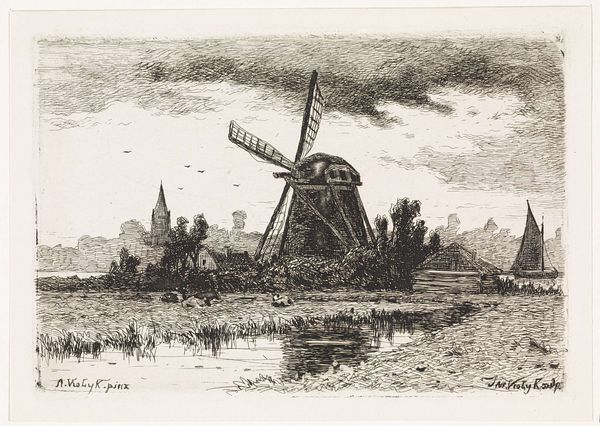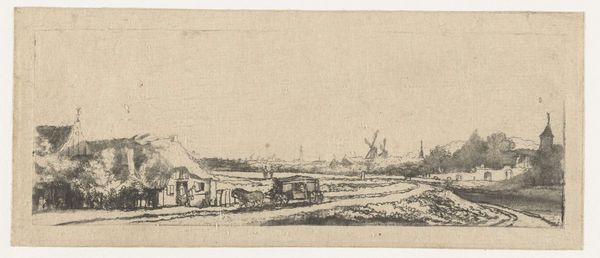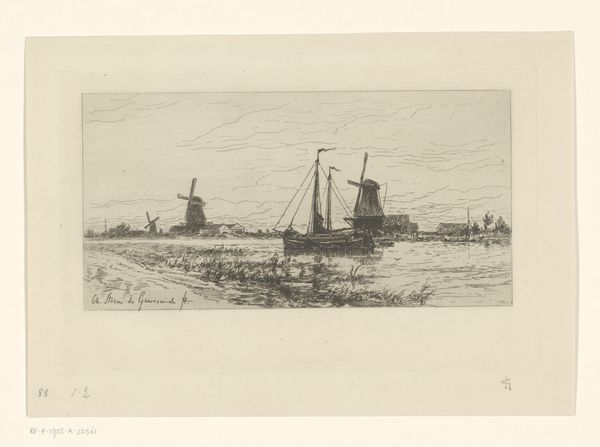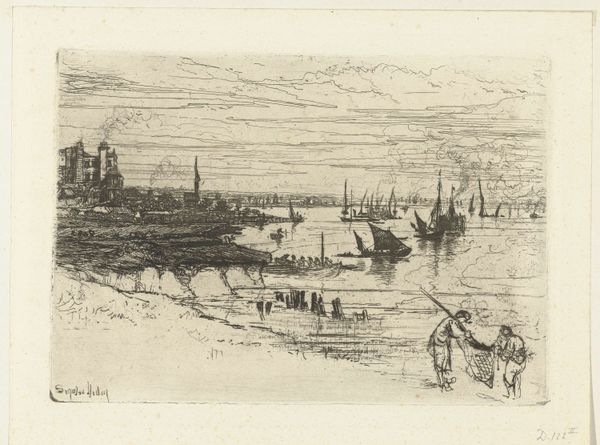
print, etching
dutch-golden-age
etching
landscape
geometric
line
realism
Dimensions: height 108 mm, width 194 mm
Copyright: Rijks Museum: Open Domain
Curator: Jan van Lokhorst's "Landscape with Windmills near Utrecht," created in 1858, offers a fascinating glimpse into the Dutch landscape through the lens of printmaking, specifically etching. Editor: It’s strikingly detailed, especially for an etching. There’s an almost melancholic stillness to the scene; those windmills seem to stand as silent witnesses. Curator: Exactly. As a print, think about the multiple layers involved. Lokhorst wasn't just drawing; he was using acid to etch the design into a metal plate. This process enables reproduction, therefore accessibility for a potentially broader audience, not always just the wealthy who could commission or purchase paintings. Editor: That reproductive aspect is crucial. This image could circulate and shape ideas about the Dutch landscape, its industry, and identity beyond Utrecht, even, wouldn’t you say? Curator: Precisely. And observe how the linear quality and geometric structure contribute to a very realistic, yet also slightly romanticized depiction of Dutch life. The composition guides our eye toward those windmills. They symbolize so much about Dutch ingenuity and the constant battle with water. Editor: But beyond a romantic viewpoint, the very materiality reveals production. What inks were used? Who made the paper? How many impressions were created? I wonder, how were the means of making the scene also influenced by economic factors related to windmills’ production—grains or other materials processed? Curator: A fascinating thought. Looking at this from a broader historical perspective, consider the role these images played in solidifying a national identity during the 19th century. Remember, the Netherlands was in a period of redefinition and rediscovery. The popularity of landscapes played into it. Editor: Right, there’s an undeniable politicization inherent in such portrayals. This scene isn't just documenting; it’s actively participating in creating a certain narrative about the region, its labor, and values. Curator: Indeed. This etching offers a subtle yet significant commentary on the evolving Dutch landscape and society. Editor: It makes you realize how even seemingly simple depictions can carry complex narratives around labor, industrial process, and collective imaginaries.
Comments
No comments
Be the first to comment and join the conversation on the ultimate creative platform.
